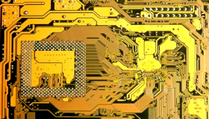 Treasury Curve is launching a cloud-based treasury management system that will allow corporate treasuries to pick and choose the functions they need and pay on a usage basis, while greatly reducing the related technology-support burden corporates have faced by using the SWIFT network to conduct fund transfers.
Treasury Curve is launching a cloud-based treasury management system that will allow corporate treasuries to pick and choose the functions they need and pay on a usage basis, while greatly reducing the related technology-support burden corporates have faced by using the SWIFT network to conduct fund transfers.
The four primary modules Treasury Curve is offering cover payments, cash management, FX and investments. The Silicon Valley-based firm has offered a portal to select money market funds since 2006.
Traditional providers of treasury management systems, including Sungard and Kyriba, have sold software on a per seat basis. In-house software typically requires a significant information-technology team to maintain it, and the per-seat fee has made the software affordable mostly to the largest corporations.
“Our product is affordable and available to companies which are not necessarily in the Fortune 100,” said Aron Chazen, managing director and co-founder of Treasury Curve. “Treasury departments are cost centers and they typically have limited resources, with people working in them often wearing multiple hats. Our product has a sliding fee scale depending on the customer’s usage, like a utility, so we’re more affordable for smaller as well as larger companies.”
Brian King, assistant treasurer at Hitachi Data Systems, noted that treasury departments tend to be “quite lean, so having software-as-a-service makes sense, because you’re putting the onus back on the software provider to deliver and support the service.”
Another plus is customers can purchase modules individually, so if a company already has a treasury management system, it can retain it and use Treasury Curve to fill parts that are missing.
Hitachi currently uses Excel spreadsheets to complete most of its treasury functions. Mr. King said the Santa Clara, CA-based provider of information technologies, services and solutions, is seeking to reduce the number of banks it deals with, so when it adopts a treasury system it will have to create fewer links—an arduous task that must be maintained—between the banks and the treasury software. Legacy treasury systems typically require companies to create those links, which typically differ from bank to bank.
“One of the reasons I’m interested in Treasury Curve is that I may be able to adopt a treasury system sooner, because we could utilize SWIFT directly and wouldn’t have to create a lot of custom connections to banks,” Mr. King said.
He said Hitachi would likely get the most use out of the cash-management module, to view cash balances worldwide and manage liquidity. The fact that Treasury Curve has a broker-dealer built in, he added, simplifies the investment process by automating it.
The Treasury Curve system avoids the need to develop and maintain links to banks because it uses a direct connection to the SWIFT messaging system, used by most banks, to send instructions. Mr. Chazen said Treasury Curve applied for a patent application to transfer funds using SWIFT three years ago, after a large hedge fund approached the company and wanted to interact with the firm’s money market portal using the global messaging system.
“We have filed a patent application for using SWIFT to move money and use straight through processing to capture that data into our system and get it into companies’ spreadsheets and general ledgers, and vice versa,” Mr. Chazen said.